Business Bites: Innovation and change
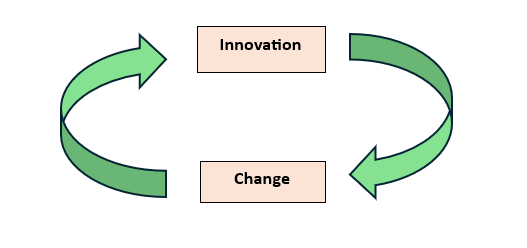
Figure 1: A diagram of innovation and change
It cannot be ignored that change is often a stimulus for innovation, and that innovation introduces change. As can be seen in Figure 1, the two are intrinsically linked.
According to McKinsey & Co1 , “In a business context, innovation is the ability to conceive, develop, deliver, and scale new products, services, processes, and business models for customers”.
Why do businesses need a culture of innovation?
There are many reasons, and these can include a strategic goal to enable you stay ahead of your competitors and/or to avoid obsolescence. Having an innovative culture helps businesses to embrace change and be able to adapt to change more quickly. Thriving during transition and adapting to rapidly changing environments, be that new competitors, disruptive new innovations (for example AI), or changing consumer demands is key to business survival and future growth.
What does a business culture of innovation look like?
A business needs to encourage experimentation and diversity of ideas through an environment where ideas can flourish. It needs to promote collaboration between teams and individuals to achieve this diversity. Businesses constantly learn from experimentation, and even in instances of failure they can learn valuable lessons and iterate towards future successes.
When considering innovation, you should consider who, what, and how. For example, are you seeing changes in customer demands? The ‘who’ is your customer, and you need to establish what they are seeking and what is driving that. The ‘what’ will be your solution for the above, and you must test this to see if it is strong enough and achievable. The ‘how’ will be your strategy and the business model attached to it, showing how you are creating extra value for your customers and your business.
In his book, The Four Lenses of Innovation2, Rowan Gibson considers four perceptual ‘lenses’ that are long established and that can catalyse innovation in business:
1. Challenging orthodoxies: questioning deeply embedded beliefs and assumptions. Exploring new and highly unconventional answers.
2. Harnessing trends: recognise future potential in developments and use them to open up new opportunities.
3. Leveraging resources: redeploying skills and assets in new ways, in new combinations, or in new contexts.
4. Understanding needs: paying attention to challenges, needs and frustrations that others may have ignored. Experiment with solutions to these.
Can a business become better at innovation?
Returning to the McKinsey & Co article1, we learn that there are eight critical elements to master:
1. Aspire: do you regard innovation-led growth as critical, and have you put in place cascaded targets that reflect this?
2. Choose: do you invest in a coherent, time and risk-balanced portfolio of initiatives; and do you devote sufficient resources to it?
3. Discover: are your business, market, and technology R&D efforts actionable and capable of being translated into winning value propositions?
4. Evolve: do you create new business models that provide defensible, robust and scalable profit sources?
5. Accelerate: do you develop and launch innovations quickly and effectively?
6. Scale: do you launch innovations at the right scale in the relevant markets and segments?
7. Extend: do you create and capitalise on external networks?
8. Mobilise: Are your people motivated, rewarded and organised to innovate repeatedly?
We learn that possibly the most important of these eight are choice and aspiration. Are your goals aspirational enough to make the difference needed? How do you make tough choices about how you utilise resources and their allocation, be they personnel, equipment, environmental factors, money/funding, or others?
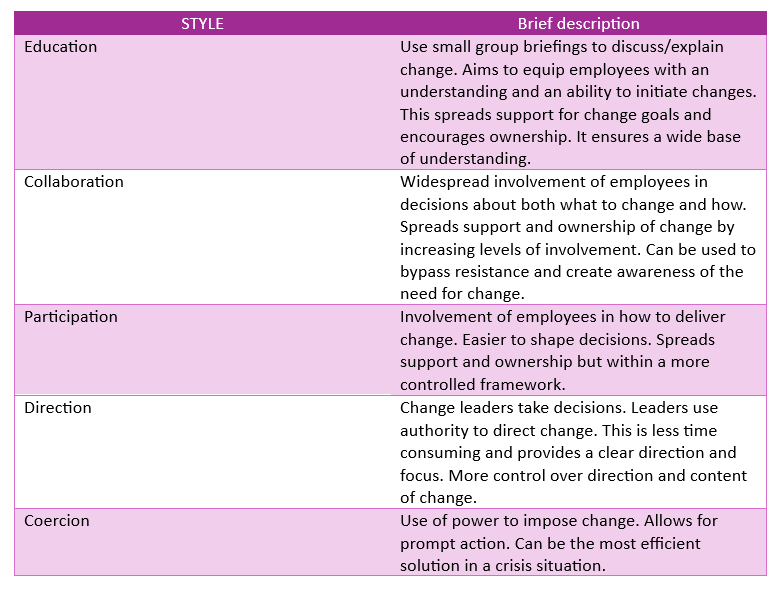
Table 1. The Change Style Continuum
Changes to align with new innovations will involve difficult scenarios. For example, it may be a requirement to implement up-skilling and re-skilling of personnel to better support new initiatives.
Change targets and change styles
Change targets when considering individuals may require consideration of:
• Outputs: outcomes of what the people do
• Behaviours: what people do and how
• Values: the way people think about what they do
Within a previous article considering leadership styles and when to use them, it was shown your approach will need to be flexed to suit a situation. This is never more so than when considering change initiatives in your business. Bolgun et al3 explain the styles in more detail in Table 1.
If we consider a people-led approach to change, and the way to move individuals towards the desired future state, we see that there are three stages to consider. Within each of these three stages, we see key elements that need to be incorporated into your plan (Figure 2).
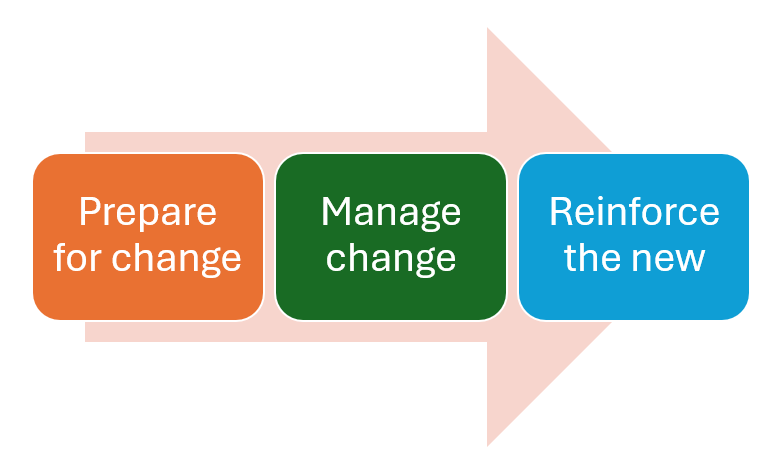
Figure 2. The three different stages of change
Stage one
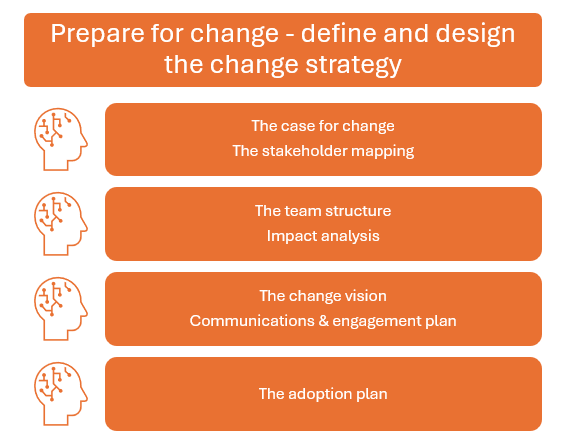
Stage two
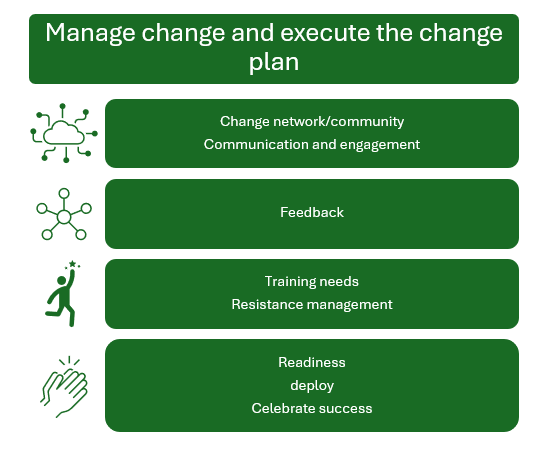
Stage three
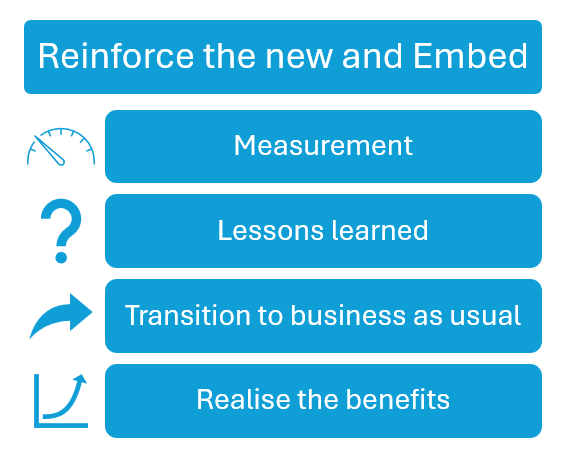
Innovation in the optical sector
Within the results of the General Optical Council’s Business Registrant Survey 20244, there are findings in relation to innovation within our sector. The report looks at drivers of innovation within the sector as well as areas that may hold back innovation. The findings may surprise some in terms of the high levels of innovation evident. What shouldn’t be of any surprise are the positive effects seen by businesses who have innovated in some way.
The survey shows that 73 per cent of businesses introduced a new or improved clinical service to patients in the preceding three years. Of these, 79 per cent introduced a service new only to their business, and 28% introduced a service new to the market. These businesses were more likely to see all of the following benefits:
• Attracted new patients (66 per cent)
• Increased revenue from existing patients (52 per cent)
• Had faster referrals (48 per cent)
• Had better IT comms with ophthalmology and GPs (34 per cent)
It seems that innovations, change and the associated benefits are alive and well in the sector. Don’t miss out on the potential opportunities to your business.
References
1. McKinsey & Co. What is Innovation? August 2022.
2. Gibson R. The Four Lenses of Innovation. John Wiley & Sons Inc. Hoboken, New Jersey, 2015; p.41-43.
3. Balogun J et al. Exploring Strategic Change. Pearson Education Ltd, 2016; p.57-65.
4. General Optical Council. Business Registrant Survey 2024.